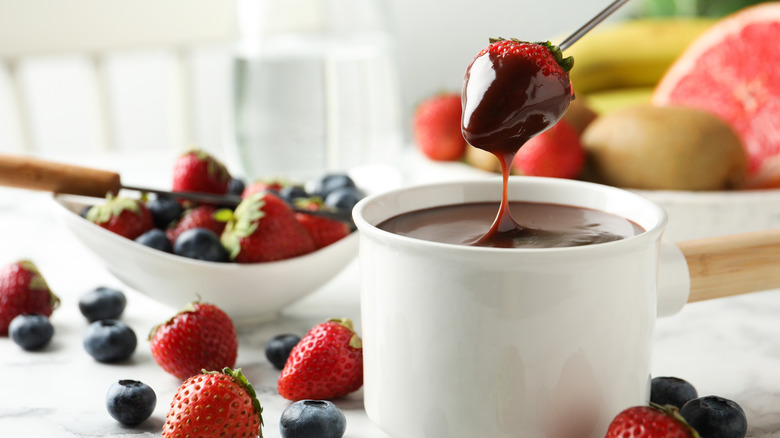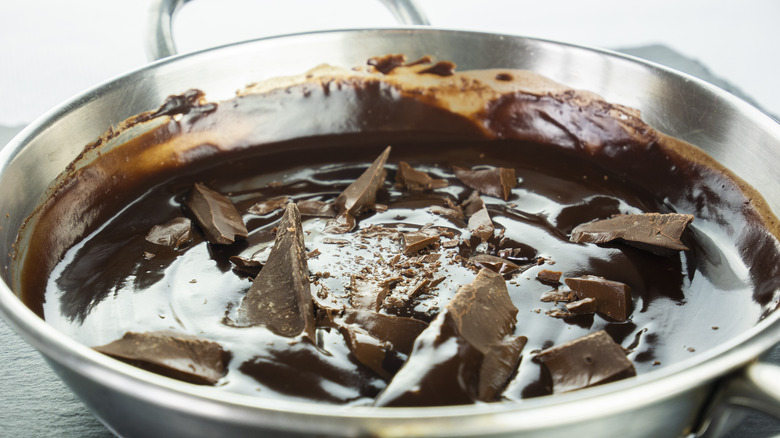The Crucial Mistake To Avoid When Tempering Chocolate, According To An Expert - Exclusive
Making chocolate-dipped goodies at home is one of the most satisfying experiences for a sweet-tooth home chef looking to prepare their own chocolate-covered strawberries, chocolate-covered pretzels, or chocolate-covered graham crackers. But tempering chocolate, which is the process of liquefying chocolate to prepare it for dipping, is a challenging culinary maneuver even for the most advanced chefs. Ahead of World Chocolate Day, we spoke with Michelle Pickering, chocolate sommelier and Senior Vice President of Global Chocolate & Cocoa Research & Development at Mondelez International, the organization responsible for Milka, Cadbury, and Toblerone, for guidance on best practices for tempering chocolate at home.
During the interview, Pickering shared the most common mistake she sees folks making with melted chocolate: adding water. "The one golden rule with [making chocolate] liquid is [that] chocolate does not like water. Sometimes consumers [use] a microwave oven to melt down chocolate. [Then] they think: 'Oh, the viscosity is too thick, let me pop in a little bit of water.' [But] chocolate does not like water; it's the enemy."
What are those white spots on your tempered chocolate?
According to Michelle Pickering, when you add water to tempered chocolate, the texture is disrupted and discoloration forms on the surface. "Those white speckles on the top [of the chocolate are] something that we call in the industry, fat migration bloom," she reveals. Fat migration bloom happens when the liquid chocolate doesn't set properly. "In the factory, when we go from molten chocolate to solid chocolate, we step the temperature down in a very specific way over a specific amount of time," Pickering explains. "When you do that at home and you go from molten to solid, you're not doing that tempering [as precisely], so you're not making sure that the fat crystals in the chocolate are lining up in the right way."
The good news is chocolate with fat migration bloom "[is] perfectly safe to eat." However, the chocolate may look unappetizing. Fortunately, Pickering has a recommendation for how to get rid of the discoloration. "The easiest thing to do is just to slightly warm [the chocolate]. If you put it in the sun for a little bit, the white speckles will disappear because as the chocolate slightly warms, [those crystals] melt back into the chocolate." She also advises adding a little milk or cream to reduce the thickness of the chocolate. This trick works very well for chocolate-covered pretzels or chocolate-covered graham crackers but is less advised for chocolate-covered strawberries, which should be kept cold.

